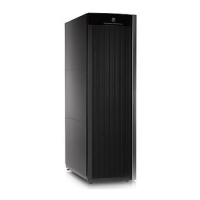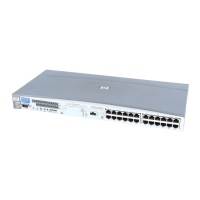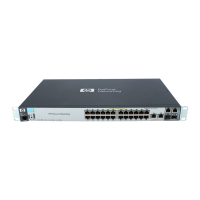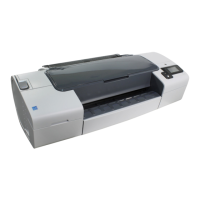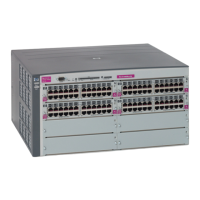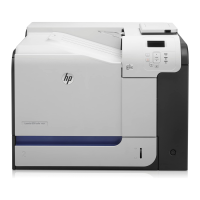The copy group is registered in the EXCTG of the storage system when the YKMAKE command is
executed. If a copy pair has already been created, executing the YKMAKE SELECT(COND)
command simply registers the copy group in the EXCTG.
This subsection describes the procedures for defining a 4x4x4 Cascade configuration for each of
the following cases:
1. Defining a new 4x4x4 Cascade configuration
2. Expanding to a 4x4x4 Cascade configuration by adding Continuous Access Journal Z copy
groups to Continuous Access Synchronous Z copy groups
3. Expanding to a 4x4x4 Cascade configuration by adding a series of storage systems to a 3DC
Cascade configuration
For details on each definition procedure in this section, see the following:
• Procedure for a Local Scan
For details, see “Performing a local scan to acquire volume information” (page 106). For details
on how to operate the ISPF panels, see “Local scan procedure” (page 430).
• Procedure for defining a path set and establishing a logical path
For details, see “Establishing a logical path” (page 112). For details on how to operate the
ISPF panels, see “Creating a path set” (page 439) and “Establishing a logical path” (page 456).
• Procedure for defining the route list
For details, see “Defining the route list” (page 118). For details on how to operate the ISPF
panels, see “Defining a route list” (page 457).
• Procedure for registering a command device
For details, see “Registering a command device” (page 119). For details on how to operate
the ISPF panels, see “Registering a command device in a Storage System” (page 470).
• Procedure for defining a copy group
For details on how to operate the ISPF panels for defining a copy group container, adding a
consistency group, and defining an EXCTG, see “Defining the copy group ID and copy group
attributes” (page 486), “Adding a C/T group” (page 487), and “Defining an EXCTG” (page 489).
Defining a new 4x4x4 Cascade configuration
Using Figure 86 (page 203) as an example, the following describes the procedure for defining a
new 4x4x4 Cascade configuration.
Setting up the Storage System
Set up the following items by using Remote Web Console.
1. Configure an arbitration command device on the subordinate disk controller.
2. Set up an arbitration path from the supervisor disk controller to the subordinate disk controller.
3. Map the arbitration command device on the subordinate disk controller to the supervisor disk
controller (setup of the remote command device).
4. Register the journal group (timer type: SYSTEM) in each of the intermediate site and remote
site storage systems.
Setting up a Business Continuity Manager Environment
• Creating a disk configuration definition file
Perform a scan that includes the volumes to be defined in the copy group and the command device.
1. From the primary host, perform a Local Scan on the primary site storage system.
2. From the intermediate host, perform a Local Scan on the intermediate site storage system.
3. From the remote host, perform a Local Scan on the remote site storage system.
Defining a 4x4x4 Cascade Configuration 207
